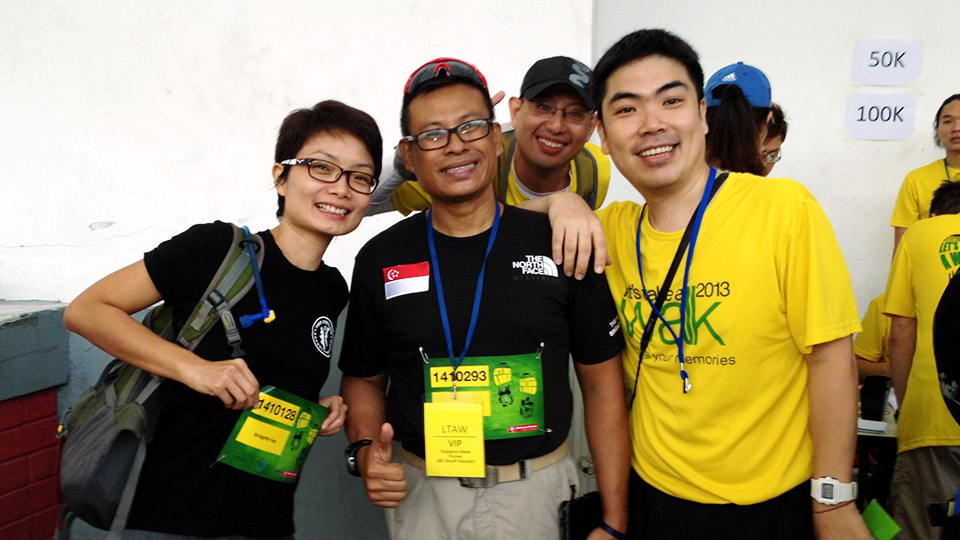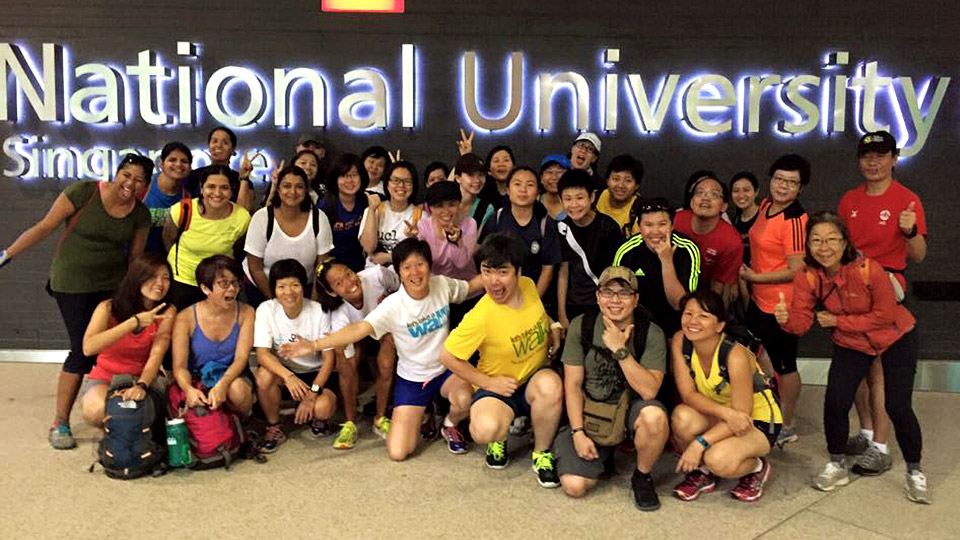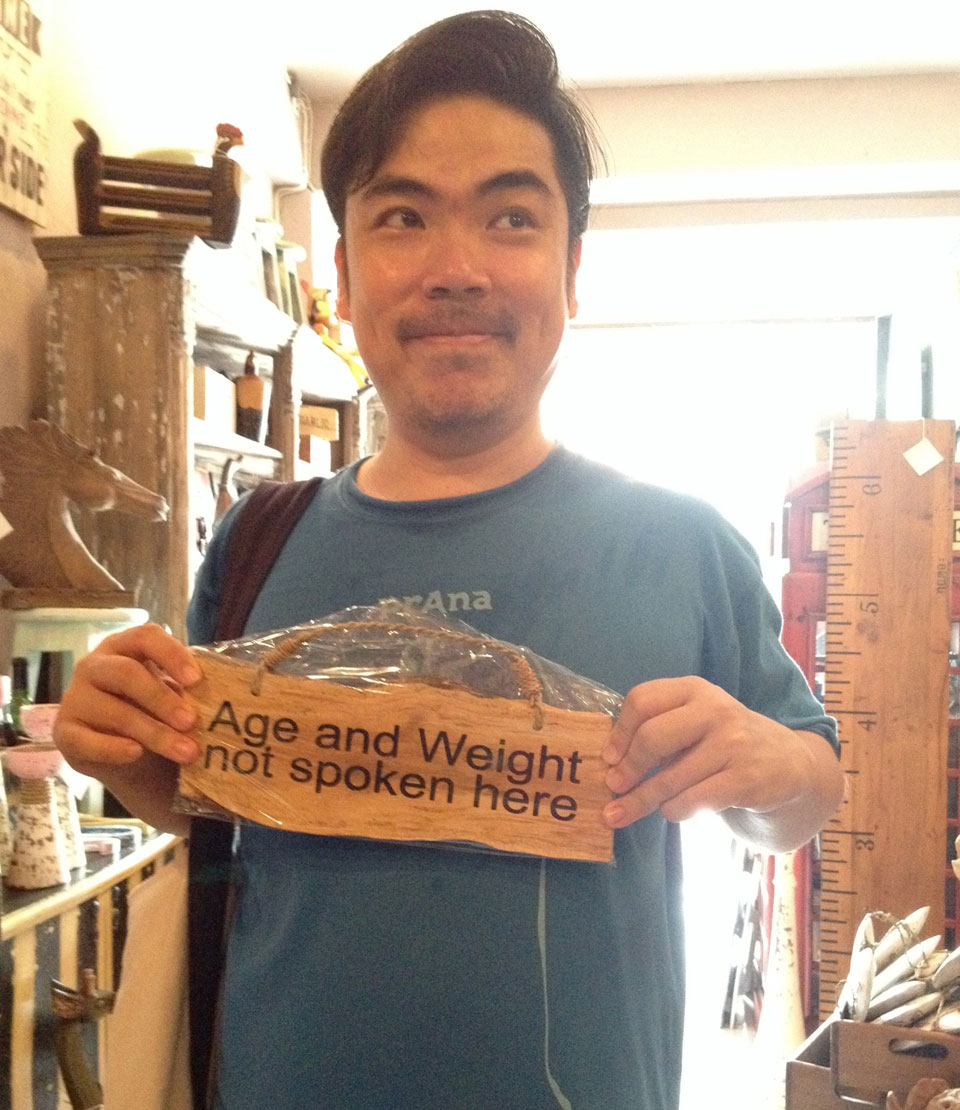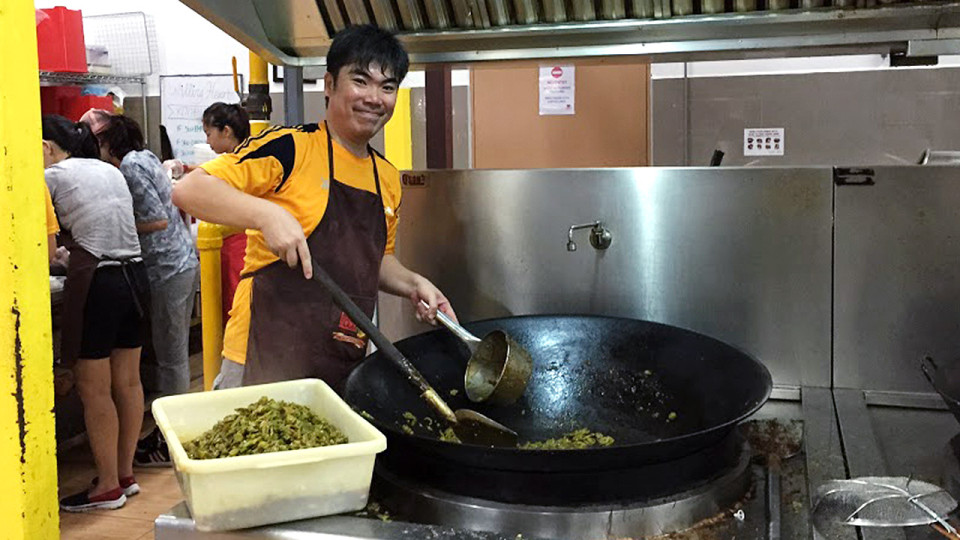Yang Tiong Hock is pretty cute. Find him at the Let’s Take a Walk 2015 team, scroll down the page and look for the guy holding the quirky sign reading: “Age and Weight not Spoken Here“. This is the fun side of Yang, co-organiser of the 2015 Let’s Take a Walk (LTAW) event scheduled to take place on 5 and 6 September 2015 at National University of Singapore’s Sports Hall. Yang’s commitment to charitable action is as deep and meaningful as the grin on his face, so if you’re seeking an example of selfless activism, you couldn’t find a better role model than Yang Tiong Hock.
RS: Could tell us about the origins of Let’s Take a Walk?
Tiong Hock: LTAW is no newcomer to the charitable event scene in Singapore. It was launched in 1997 as a challenge to participants to push mental and physical limits while raising money for a good cause. The brains and muscle behind organising the LTAW event are Raleigh Society volunteers.
RS: Is this just a regular walk?
Tiong Hock: Actually, it’s an endurance walk that offers participants a chance to conquer 100 km, 50 km and 10 km distances. It’s both a spontaneous and well-planned event. Anyone wishing to participate chooses a distance that best suits his stamina and personal goals.
RS: The LTAW celebrates nine years in September. Do you choose a new theme every year?
Tiong Hock: We do. For 2015, it’s “Celebrate Life!” The theme reminds us to seize the day and appreciate what we have. We especially salute the efforts of those who intend to complete the 100 km leg because it’s a daunting distance with mental and physical challenges. But, compared to the people who struggle every day with chronic and severe illnesses, our effort is quite literally a walk in the park.

RS: Who benefits from the LTAW 9th anniversary walk?
Tiong Hock: All proceeds, minus operating costs and Raleigh Society community project funding, go to HCA Hospice Care to support end-of-life care needs. We hope to raise S$90,000 through registration fees and donations this year.
RS: Could you tell us more about the Raleigh Society and why you joined?
Tiong Hock: During my university days, I always sought unique volunteer experiences. When I heard about an overseas expedition called “Operation Tashi Deleg” in 2001, I was in. This Raleigh Society project entailed building a school in a remote Tibet village. Those three weeks in Tibet dramatically changed my perspective on life. Since my return, I’ve helped organise myriad local community projects supported by the Raleigh Society.
RS: Aside from this event, what other projects are undertaken by the Raleigh Society?
Tiong Hock: Overseas expeditions, local community projects, the LTAW and other creative activities that include learning and charitable giving. Engaged Raleigh members open their eyes and hearts to just about every project that comes along in support of our mission of paying it forward through education and adventure.
RS: What organising challenges do you face, given the fact that LTAW is strictly a voluntary effort?
Tiong Hock: All-volunteer staffed events are challenging, but we are fortunate to recruit like-minded, kind and energetic people.
RS: Registration fees and donations help fund the walk. What do you do to keep costs down so there’s more profit for charities?
Tiong Hock: We attract sponsors to help minimise operating costs. We use social media and the Internet to get the word out. We also liaison with government agencies for help planning our route and obtaining permits. We are grateful for all of this help and couldn’t succeed without it.
RS: What’s the most memorable walk or race in which you took part? Why was it memorable?
Tiong Hock: Nothing surpasses my maiden attempt at organising the 2013 LTAW! I put my heart and soul into recruiting a new team. We attracted 800 participants and made S$60k. That said, organising a 100-percent volunteer-run event is the equivalent of running multiple marathons!
RS: Typically, charity walks are 5 km, yet the shortest Let’s Take a Walk distance is 10 km and there’s even a 100 km. Is there a reason you push distance boundaries at the LTAW?
Tiong Hock: Our event differs from others in that it is an endurance walk. Marathon runners tell us that they would rather run a 100 km than walk it because sustaining a slower pace can be daunting. That said, the arduous trek and discomfort show walkers how it feels to walk in the shoes of the sick and poor benefitting from our fundraising efforts.

RS: Runners train for their events. Can walkers do the same?
Tiong Hock: They can and should. LTAW sponsors 10 km, 18 km and 38 km training walks to get participants ready for September. We urge those undertaking the 100 km to train, because the distance is physically and mentally difficult. Your readers probably know how it feels to “hit a wall” during a marathon. That’s exactly what can happen to a 100 km walker. You ask yourself, “Why am I doing this?” umpteen times. But you keep going.
RS: What sort of walking gear will you bring to undertake the 100 km?
Tiong Hock: I pack muscle rub, one or two changes of socks, shirt and shorts. I recommend wearing socks inside out to avoid blisters and of course, shoes must fit right, be comfortable—and this is no time to break in new shoes. I always prepare for hot, wet and humid weather and stay hydrated during the walk.
RS: Singapore has a vibrant, well-supported charity scene; why are charity walks so popular in Singapore?
Tiong Hock: In my opinion, Singaporeans are unusually generous and participatory. We love to pair our passion for physical fitness with helping others. We also attract people who can’t undertake running events for one reason or another. Walking for a cause is terribly meaningful for them.
RS: Do we do enough to help people who are less privileged? If not, how can we improve our efforts?
Tiong Hock: I see evidence of Singapore’s charitable spirit all the time—especially when I compare our national efforts with neighbouring countries. Paying it forward is a moral obligation and there can never be enough—enough charity, enough volunteers or enough goodwill! Making our community a better place and educating people to create awareness is a goal every Singaporean can adopt.

RS: What can we do to help?
Tiong Hock: Donate. Volunteer and share event details with your entire social network.
RS: You’re doing the 100 km walk. What’s the first thing you’ll do when it’s over?
Tiong Hock: Bathe and eat BCM! (Bak Chor Mee)
Given Yang Tiong Hock’s commitment to charitable giving, he says that Singapore does a good job of supporting causes, especially those tied to athletic events, but could always do more. Do you believe that Singaporeans could do more to help people, or are you of the opinion that we’re more generous than most nations?
The Let’s Take A Walk 2015 registration is still open. If you wish to support a charitable cause and help raise donations, why not take a break from the usual run and sign up for this endurance walking event.




